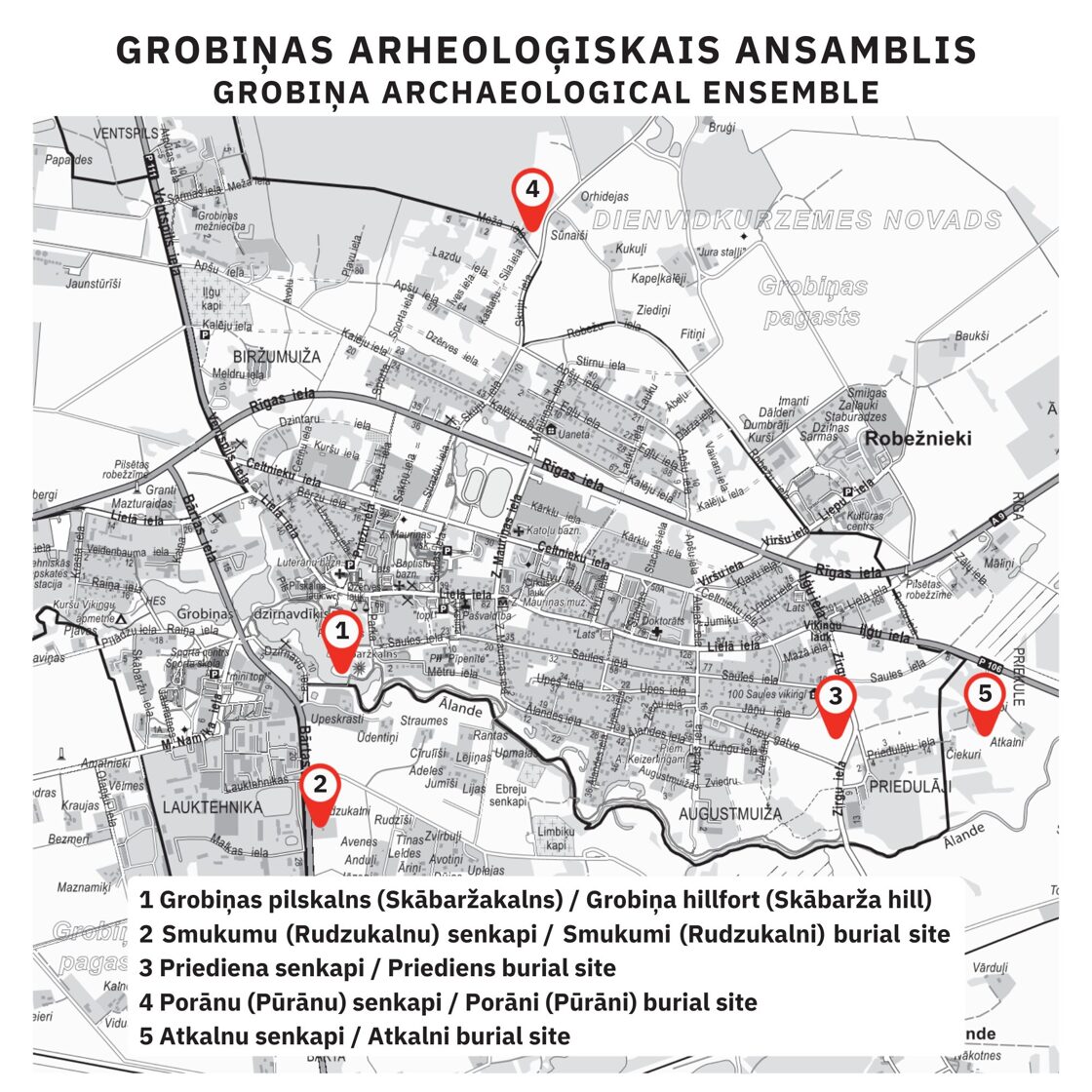Smukumi flat-grave burial site
Rudzukalni, Grobiņas pagasts
GPS: 56.527934, 21.161885
The Smukumi (Rudzukalni) burial ground is the only part of the Grobiņa archaeological ensemble located on the left bank of the Ālande River. Similar to the Priediena burial site, the Smukumi burial ground showcases the coexistence of various burial traditions and the interaction of different cultures. During multiple excavation seasons (1929–1930, 1962, 1987–1989), an area of approximately 4,000 m² was explored, revealing both flat cremation graves and flat skeletal graves dating back to the pre-Viking era.
The Smukumi flat burial site with flat cremation graves is characteristic of the 7th–9th century burials found on Gotland. Evidence shows that during this period, alongside the local Curonian community, Scandinavian settlers from different regions lived in Grobiņa. They represented distinct cultures and buried their dead on both sides of the river.
Flat Cremation Graves
About 120 burials have been studied at the Smukumi burial ground, but the total number is estimated to be around 1,000. Cremated remains were placed in round or oval pits measuring 0.35–1.25 meters in diameter and 0.2–0.5 meters deep, with no sand mound built over them. In some graves, the cremated remains were placed in clay vessels, wrapped in fabric, or treated similarly. Both cremated and unburned items, often deliberately deformed, were found in the burials. These included:
- Weapons and armor: swords, spearheads, shield components.
- Everyday items: comb fragments, keys, tweezers, knives.
- Ornaments: horseshoe-shaped brooches, box brooches, tortoise brooches, bell-shaped pendants, bracteates, glass and bronze beads.
Discoveries
As with the Priediens burial site, cultural interaction is evident in the findings from Smukumi.
Some cremation graves contained artifacts typical of the 7th–9th century Curonians, such as twisted bronze neck rings with hooked-loop ends, iron pins, and bronze spiral bracelets. Several items, like the bronze tortoise brooch decorated with geometric patterns characteristic of the Curonians, highlight the blending of Scandinavian and local cultural elements.
Ritual traces associated with burial practices have also been discovered, such as:
- Deliberate destruction of weapons (breaking or bending swords, spears, and battle knives).
- Driving a spear into the bottom of the grave pit.
- Breaking ritual vessels.
- Burning a fire near the graves.
- Use of stones in ritual sites, whose purpose remains unclear.
Novadays
The 1.02-hectare burial site was partially destroyed in the early 20th century when a gravel pit and farmstead were established. Today, the site is home to industrial buildings and infrastructure built in the second half of the 20th century. Some of the burial ground remains covered by a meadow, surrounded by drained agricultural land.
The Smukumi burial ground is still not fully explored, and its extent may be much larger than currently recognized.
The Smukumi (Rudzukalni) burial ground is part of the Grobiņa archaeological ensemble, which is included in the Latvian National List of UNESCO World Heritage Sites.
Grobiņa Archaeological Ensemble
